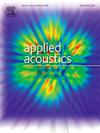Habor protection with underwater acoustic barrier: Method and system
IF 3.4
2区 物理与天体物理
Q1 ACOUSTICS
引用次数: 0
Abstract
Active acoustic detection of unmanned underwater vehicle (UUV) remains challenging because of weak target echoes in backward scenarios. In this paper, a real-time forward detection method using limited target data was proposed. Trained dimensionality reduction technique was employed to suppress dominant direct blast interference. A novel sonar system was developed based on detecting target-induced variations in the transmitted acoustic field. High-frequency underwater acoustic barriers were established by deploying multiple source and receiver buoys with proposed method embedded. Remote sensing was realized through satellite communication and post-processing. A sea trial was conducted to evaluate the system performance. The timing of each crossing event was clearly observed, and target range was further estimated through data fusion. The system performance was found to be influenced by the channel and the source-target-receiver geometry. The effects of ambient noise and direct blast interference were comparatively analyzed.
水声屏障保护港口:方法与系统
由于落后场景下目标回波较弱,无人潜航器的主动声探测仍然具有挑战性。提出了一种基于有限目标数据的实时前向检测方法。采用训练降维技术抑制主要的直接爆炸干扰。提出了一种基于探测目标诱导的发射声场变化的新型声纳系统。采用该方法嵌入多个源接收机浮标,建立了高频水声屏障。通过卫星通信和后处理实现遥感。进行了海上试验以评估系统性能。清晰地观察每个交叉事件的时间,并通过数据融合进一步估计目标距离。系统性能受信道和源-目标-接收机几何形状的影响。对比分析了环境噪声和爆炸直接干扰对爆破效果的影响。
本文章由计算机程序翻译,如有差异,请以英文原文为准。
求助全文
约1分钟内获得全文
求助全文
来源期刊

Applied Acoustics
物理-声学
CiteScore
7.40
自引率
11.80%
发文量
618
审稿时长
7.5 months
期刊介绍:
Since its launch in 1968, Applied Acoustics has been publishing high quality research papers providing state-of-the-art coverage of research findings for engineers and scientists involved in applications of acoustics in the widest sense.
Applied Acoustics looks not only at recent developments in the understanding of acoustics but also at ways of exploiting that understanding. The Journal aims to encourage the exchange of practical experience through publication and in so doing creates a fund of technological information that can be used for solving related problems. The presentation of information in graphical or tabular form is especially encouraged. If a report of a mathematical development is a necessary part of a paper it is important to ensure that it is there only as an integral part of a practical solution to a problem and is supported by data. Applied Acoustics encourages the exchange of practical experience in the following ways: • Complete Papers • Short Technical Notes • Review Articles; and thereby provides a wealth of technological information that can be used to solve related problems.
Manuscripts that address all fields of applications of acoustics ranging from medicine and NDT to the environment and buildings are welcome.
 求助内容:
求助内容: 应助结果提醒方式:
应助结果提醒方式:


